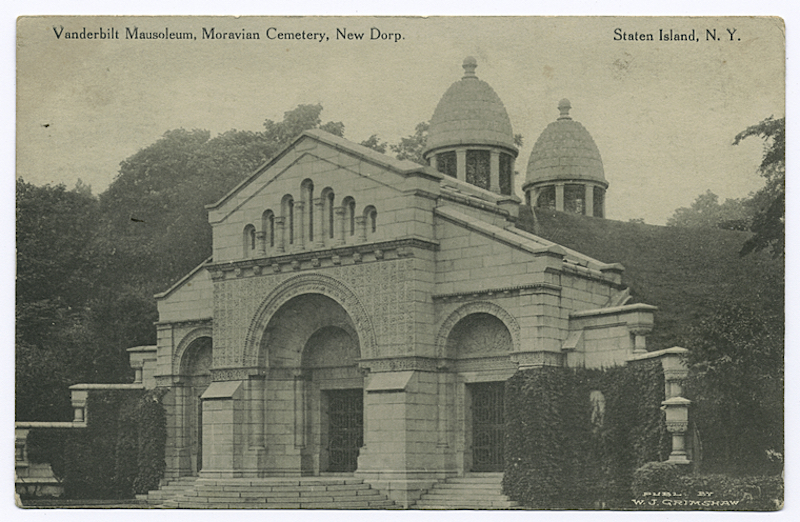3. The Vanderbilt Mausoleum on Staten Island

Though most of the grand mansions Richard Morris Hunt designed for the Vanderbilts were torn down, one of his designs for the wealthiest family in America still stands in a rather unlikely place: a plot of private land adjoining Moravian Cemetery on Staten Island. It was planned by William H. Vanderbilt—son of Commodore Cornelius Vanderbilt—and overlooked the farm in New Dorp that he shared with his wife Maria. When William died, his son George W. Vanderbilt oversaw the mausoleum’s construction from 1884 to 1886.
“The Mausoleum is one of the few remaining New York City buildings designed by Hunt for the Vanderbilts, one of the most successful architect-patron relationships in American history,” according to the 2016 Landmarks Preservation Commission designation. The mausoleum is primarily Romanesque Revival in style, with three arched doorways, keyhole openings, and carved elements. When it was completed in 1886, it was hailed as “the most magnificent tomb of any private individual” and “the most costly mausoleum in America.”





